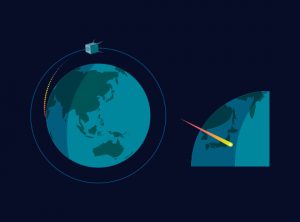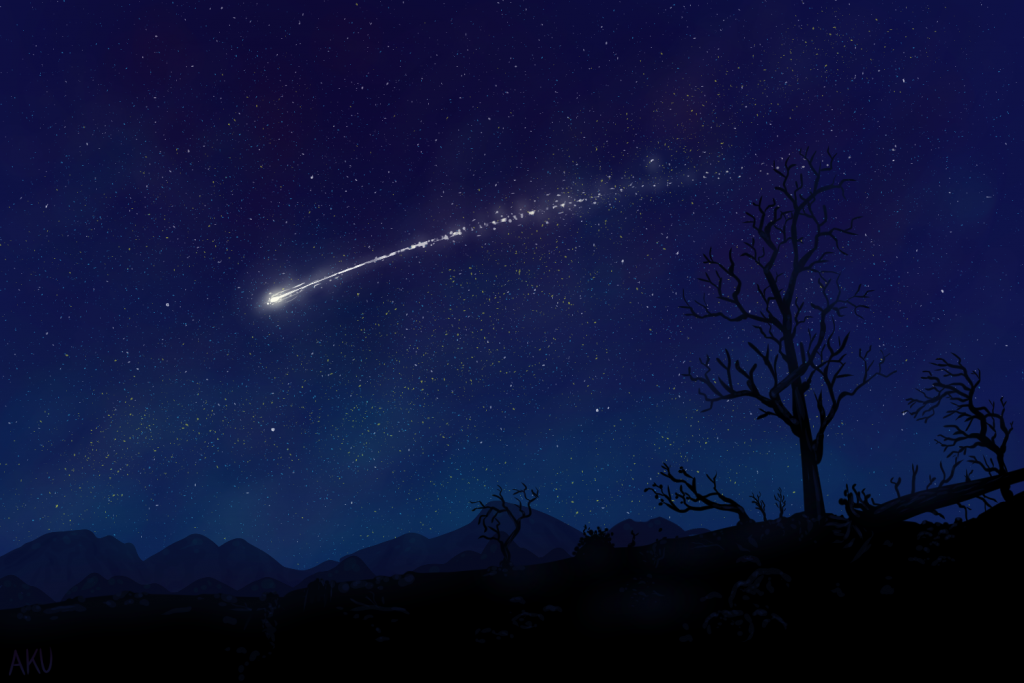Editor’s note: This post has been updated and broken links removed. Please see our policy on broken hyperlinks for more.
The skies over Japan will light up with a spectacular display of shooting stars in 2019. Do we know this because scientists have studied the astronomical and atmospheric conditions? Nope. We know this because the meteor shower is a planned, staged, man-made event. A Japanese company called Star-ALE has developed the technological ability to create an artificial display of shooting stars and is planning to test their concept as early as next year. If all goes according to Star-ALE’s proposals, we may even see a awe-inspiring display of man-made meteors incorporated into the Opening Ceremony of the 2020 Summer Olympics in Tokyo. How is this possible? What technology is needed to make the sky light up with hundreds of tiny glows? Let’s take a look.
The test release of the man-made meteor is slated to take place over Hiroshima in 2019. Hiroshima was chosen for three reasons. The first, and most obvious one, is that this city was witness to the incredibly destructive forces of science and technology so it seems only fitting to honor the lives lost at Hiroshima by demonstrating the beautiful side of science and technology. The second reason was that long-term weather forecasting indicated that the area will have clear skies on the proposed launch day. Lastly, the local government officials of Hiroshima have been extremely cooperative and have engaged in open and favorable dialog with the people at Star-ALE. The spectacle should be visible in a sixty mile radius.

To achieve the artificial meteor shower, Star-ALE will launch several micro-satellites into a sun-synchronous orbit. Measuring only about a foot and a half in diameter – about the size of a drone, – the micro-satellites will carry a load of small pellets which can be remotely released from the Star-ALE commander back on earth. The pellets will fall back to earth and when they pass through the atmosphere, the friction will cause them to burn brightly for a short period of time, creating the effect of a shooting star. Star-ALE scientists have even devised a way to change the chemical composition of the pellets so that they burn different colors as they tumble through the atmosphere. Of course, the exact formula for the pellets’ chemistry is a closely guarded Star-ALE secret.
The process for generating the shooting stars starts with positioning the satellites in orbit, pointing in the desired direction. At the designated time, the satellites will release the pellets, then reposition its angle and release more. By changing the release time and release angles, the man-made meteors will appear more like natural ones, with some lasting longer than others and coming from different directions. The burning pellets stay well out of the way of commercial airlines, which fly at heights of seven to nine miles above the ground, igniting in the atmosphere between 60 and 35 miles above the Earth’s surface,
All this technology means an expensive price tag. Each pellet cost approximately $8,000 and the company’s proposal for a 2020 Olympic Opening Ceremony display calls for one thousand of these pellets, putting the price tag well-over $8 million…even higher after one factors in the cost of launching multiple micro-satellites into orbit. This is the reason why the Tokyo Olympic committee has not yet officially confirmed that the man-made meteor shower will be part of the 2020 games. Still two years away, the 2020 Tokyo Olympics is already rumored to be way over budget, therefore the flashy, yet expensive light show may be too much to expect.

The founder and CEO of Star-ALE, Lena Okajima, explained that she hopes that the money generated from the man-made meteor shower could be used to fund further research into space exploration dilemmas, such as ways to dispose of space junk and old satellites, as well as studies into microorganism found on meteorites. She noted that Star-ALE is calling the artificial shooting stars an example of aerospace entertainment—the first of its kind. This comes on the heels of SpaceX and is part of a wave of entrepreneur-led space technology and advancement companies that are operating independently of national governments.
The exact day of the artificial meteor shower has not yet been released to the public but it is being planned for early 2019. Star-ALE’s founder, Okajima, added that she hopes the man-made meteor shower not only entertains the spectators but inspires them to learn more about space exploration and to discover career opportunities in STEM fields.
Sources:
Lewis, Danny. “This Startup Wants to Open the 2020 Olympics with a Man-Made Meteor Shower.” Smithsonian Institution. 25 May 2016. Web. 7 Feb. 2018.
Prosser, Marc. “The First Man-Made Meteor Shower Will Light Up Japan in 2019.” Singularity Hub, 20 Nov. 2017. Web. 7 Feb. 2018.
